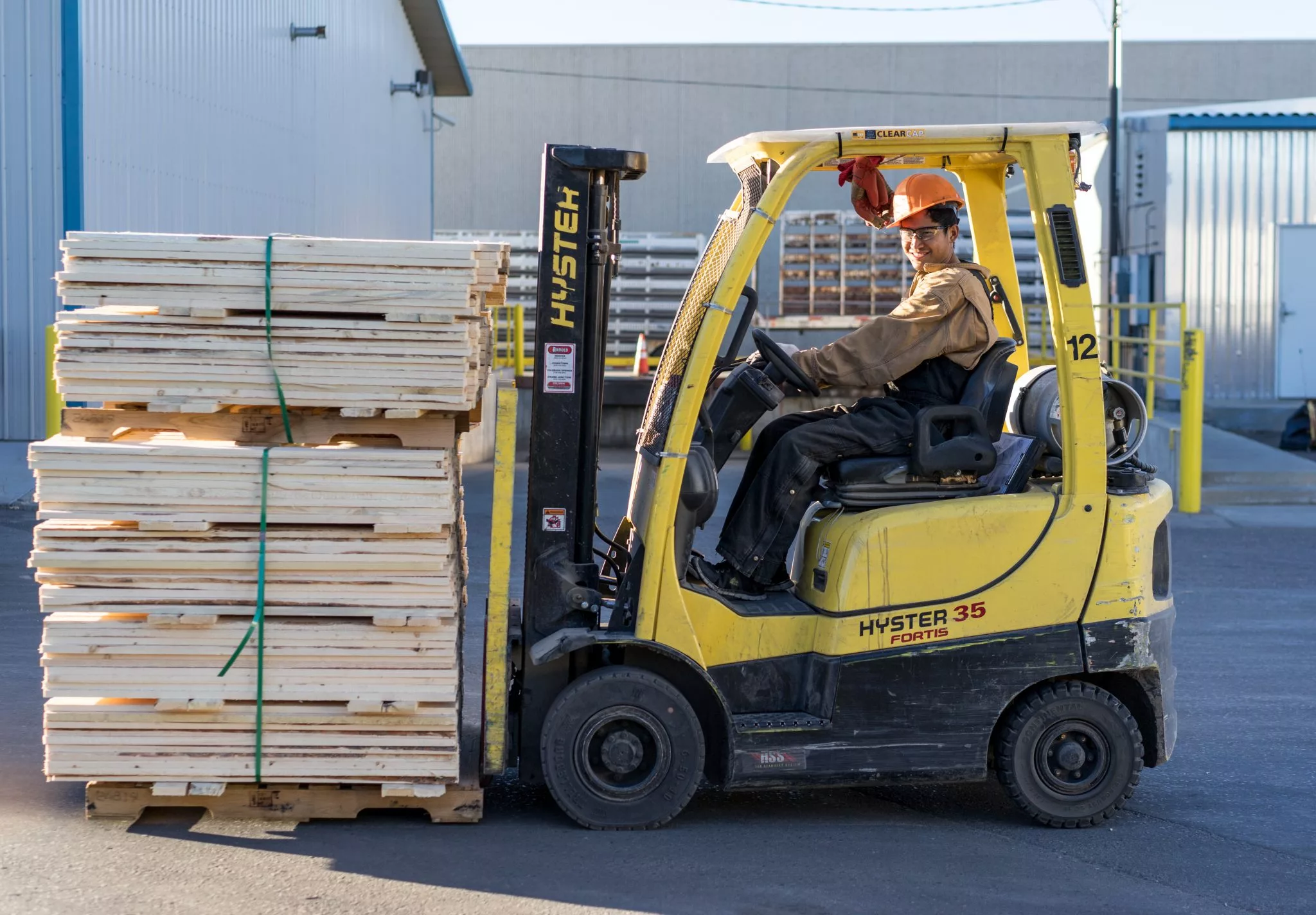Facing an embezzlement scandal and a 300 percent employee turnover rate, Denver-based L&R Pallet was about to close its doors. Then the owner, James Ruder, got a call from his local refugee resettlement agency — and reinvented his company. Read the full story of L&R Pallet’s transformation, or just learn from Ruder’s key tips on how to work with refugees.
1 // Hiring refugees will not solve all your labor problems.
While refugees constitute a potentially effective workforce, hiring refugees is not a magic bullet for solving staffing issues. Many refugees come to the US so traumatized, so misinformed, and so untrusting that they require special attention and handling from other employees and managers. In fact, some refugee resettlement specialists will tell you that refugees can experience more trauma from simply being resettled in the US than they did as refugees. Ruder learned from his experiences that when he let go of thinking refugees would solve all his labor problems, he was able to take the time to approach their onboarding more patiently and thoroughly.
2 // Trust is very important.
Ruder learned that he had to follow through on promises and demonstrate caring for their wellbeing to gain the trust of the refugees. To provide the psychological safety they need, you’ll need to help them negotiate, secure, and maintain their lives outside of work. For example, many of L&R’s workers’ apartments were infested with bed bugs and they weren’t sleeping well. Ruder sent a manager to take care of the issue — on company time. While it might seem small, gestures and outreach like this go a long way toward creating a trusting and caring — and thus high-performing — company culture.
3 // Get trained by your refugee resettlement agency.
Ruder attributes his early failure with hiring Bosnian refugees to his lack of knowledge about how to work with them. Make sure you ask lots of questions. Important areas include languages and dialects spoken, possible animosity among different groups of refugees, what motivates the refugees, and cultural factors that could help increase the satisfaction, productivity, and commitment of your refugee employees.
4 // Help them create community.
Refugees have been uprooted from their home countries and dumped into an unfamiliar society, so it’s important to help create a workplace community. That means hiring and placing together more than one person from a particular country so they have each other for support. Ruder realizes now that he made the mistake of scattering newly hired Bosnian refugees throughout his company, thinking it would help train them. Instead, it made them feel alone and isolated, and all but one quit.
5 // Take into consideration how long refugees have been in their resettlement country.
When refugees are first resettled, they have a lot to learn about their new country, and they will have many appointments (e.g., doctor’s visits, registering kids in school) taking up a significant amount of their time, causing them to potentially miss some work. Consider alternative work schedules for new arrivals. Refugees who have been in the country for a few years will still need services, but they will likely miss less work due to mandatory appointments related to recent arrival.
6 // Training is really, really important.
One of Ruder’s greatest lessons was that he had to slow down. Instead of handing over a nail gun and expecting refugees to be competent after three days of training, L&R Pallet extended the training period to a couple of months. Not only did the training involve verbal communication and a lot of pictures (see below), but Ruder’s company also built an entirely new training facility to mimic the environment of the shop floor.
7 // Know the difference between translation and communication.
Simply translating policies and procedures from English won’t do the trick. First of all, many refugees come from countries in which dozens of languages or dialects are spoken, so just getting the message across might be challenging. Second, due to cultural differences, what is obvious to you will not be obvious to them. For example, having been exposed to heavy equipment for years, Americans will likely be cautious in the manufacturing facility, but refugees have not necessarily developed that fear of getting too close to dangerous equipment. Focus on demonstrating rather than talking; try written instructions with pictures. Rather than using language, use the other senses, including sight, sound, touch, and even smell and taste.
8 // Learn everyone’s name.
While creating a pet nickname for an employee might be a sign of endearment in the US, it can be insulting for those from other cultures. Make it a point to be able to pronounce your refugee employees’ names. It will mean a lot to someone who has been persecuted and whose life has had little value to those opposed to them. Also, be cognizant of hand gestures you use. These, too, can be insulting or have different meanings across cultures.
9 // Be ready to provide support services.
This might mean hiring a social worker, an attorney, or even a chaplain to connect refugees to the services they need and are eligible for, and working closely with refugee resettlement agencies that can help with some of the refugees’ needs. Offering English classes at your workplace can also make a huge difference, as many refugees don’t have transportation to get to such classes, or may not want to take even more time away from their families to attend.
10 // Focus on rewards and positive reinforcement, not punishment and discipline.
Refugees come from difficult circumstances. They feared for their lives and the lives of those they love. The last thing they need is to fear being punished at work. Therefore, reconfigure your policies from a reward perspective. For example, rather than giving demerits for being late to work, give points for being on time, and let those points be redeemable for things they value. Or give employees points they can “spend” on being late or missing work when they need to, rather than taking points away. Also, make sure to communicate really clear expectations and consequences so any actions you need to take don’t seem arbitrary.
11 // Transportation is important.
While some refugees will come to the US with enough resources to buy a car, most will not. As such, they rely on public transportation to get to work. Providing them with a free monthly bus or rail pass is a benefit that refugees will likely value.
12 // Don’t create an “us” versus “them” situation.
Fostering diversity in the workplace is a noble goal, but it’s not always easy to accomplish. When you start mixing ethnic groups, says L&R’s management, “the body can reject the organ.” Current employees may become jealous if one group appears to be favored over the other, and existing employees may fear that they will be replaced. Create an atmosphere that emphasizes teamwork and a common goal (e.g., the overall success of the company). Show each employee how their role contributes to the collective achievement of that goal. Simply saying aloud that “Nobody can do everything well, and everyone does something well; we all need each other to succeed” can foster greater trust, respect, and a desire to work hard for the greater good.





